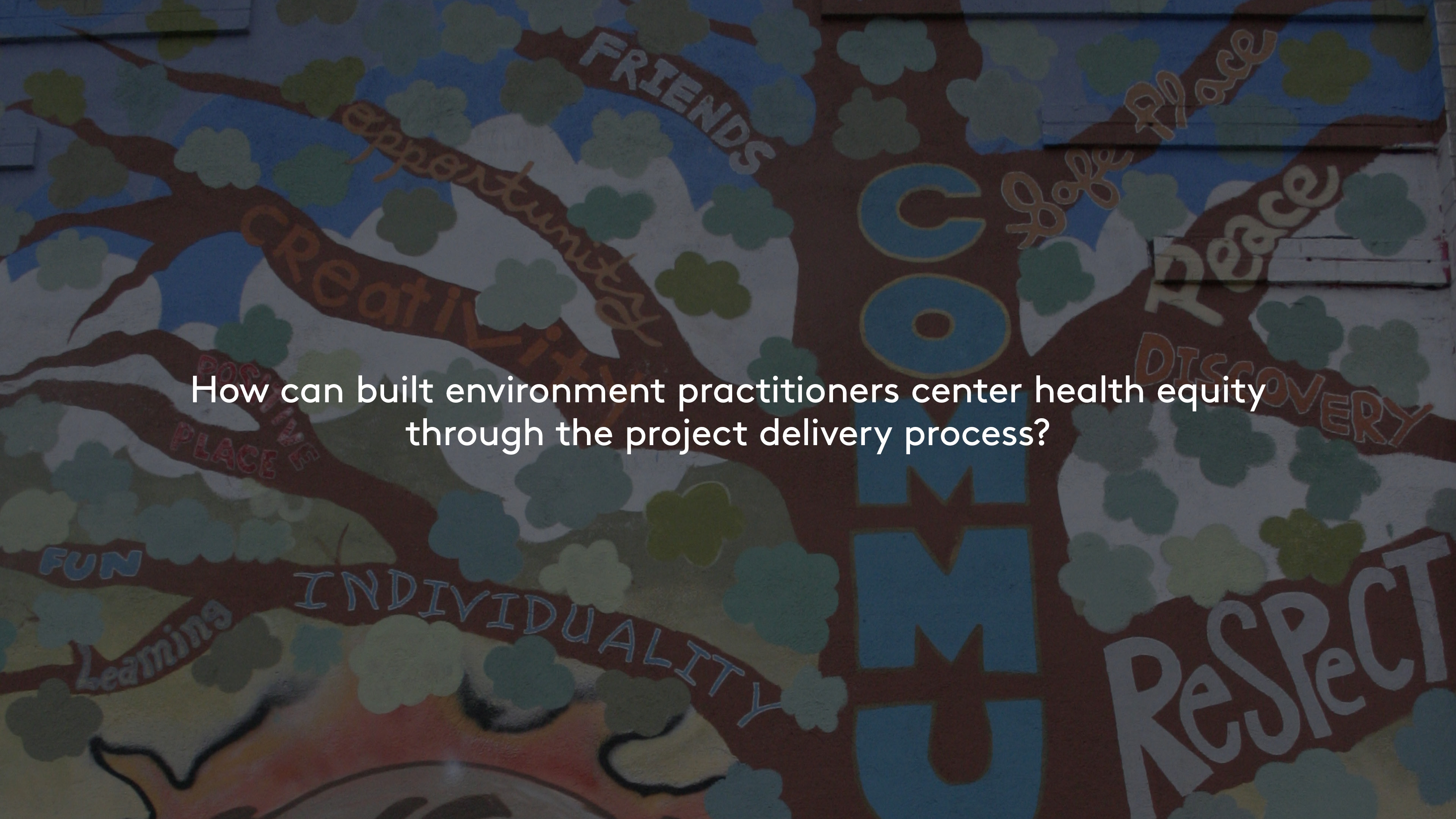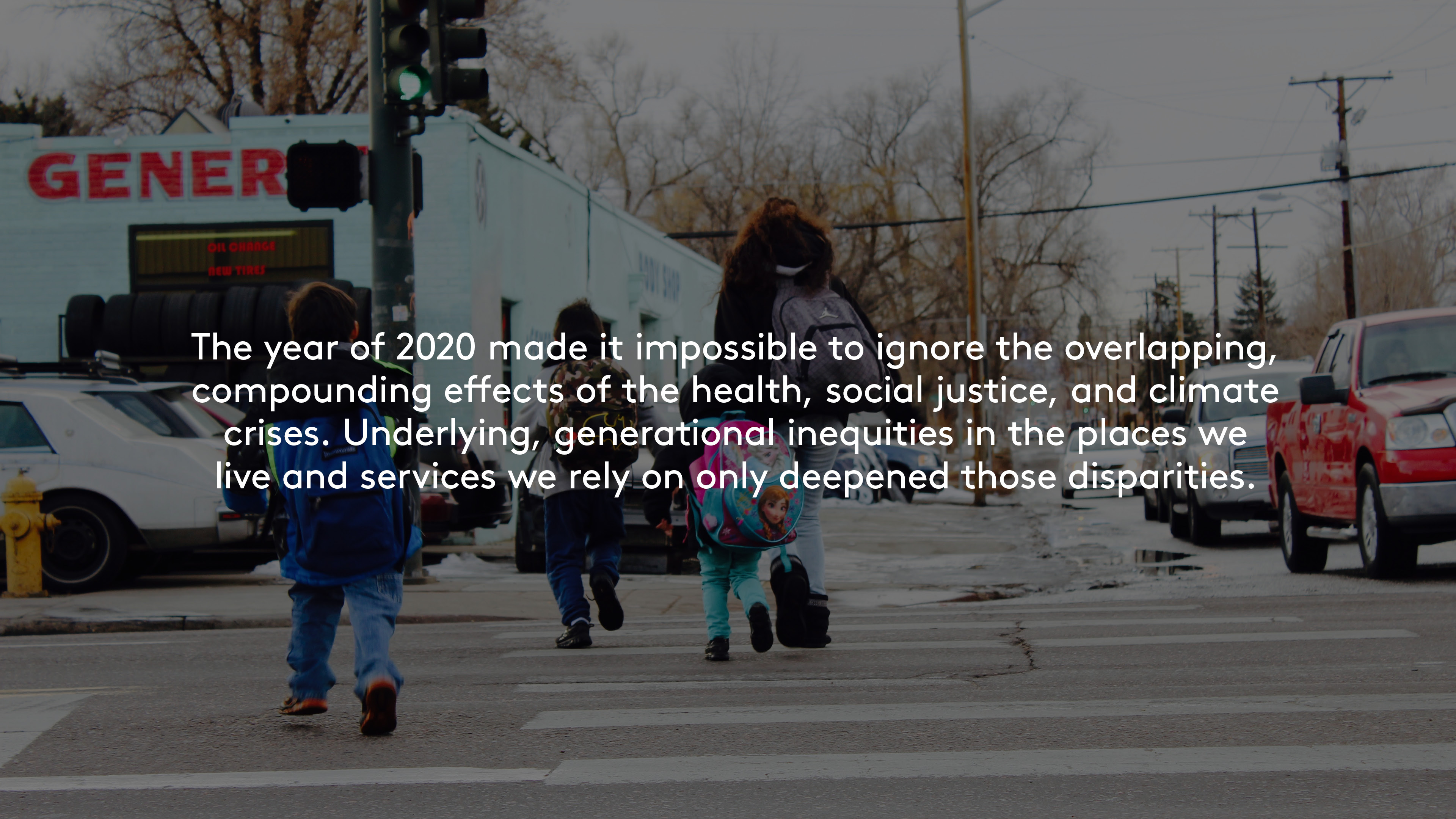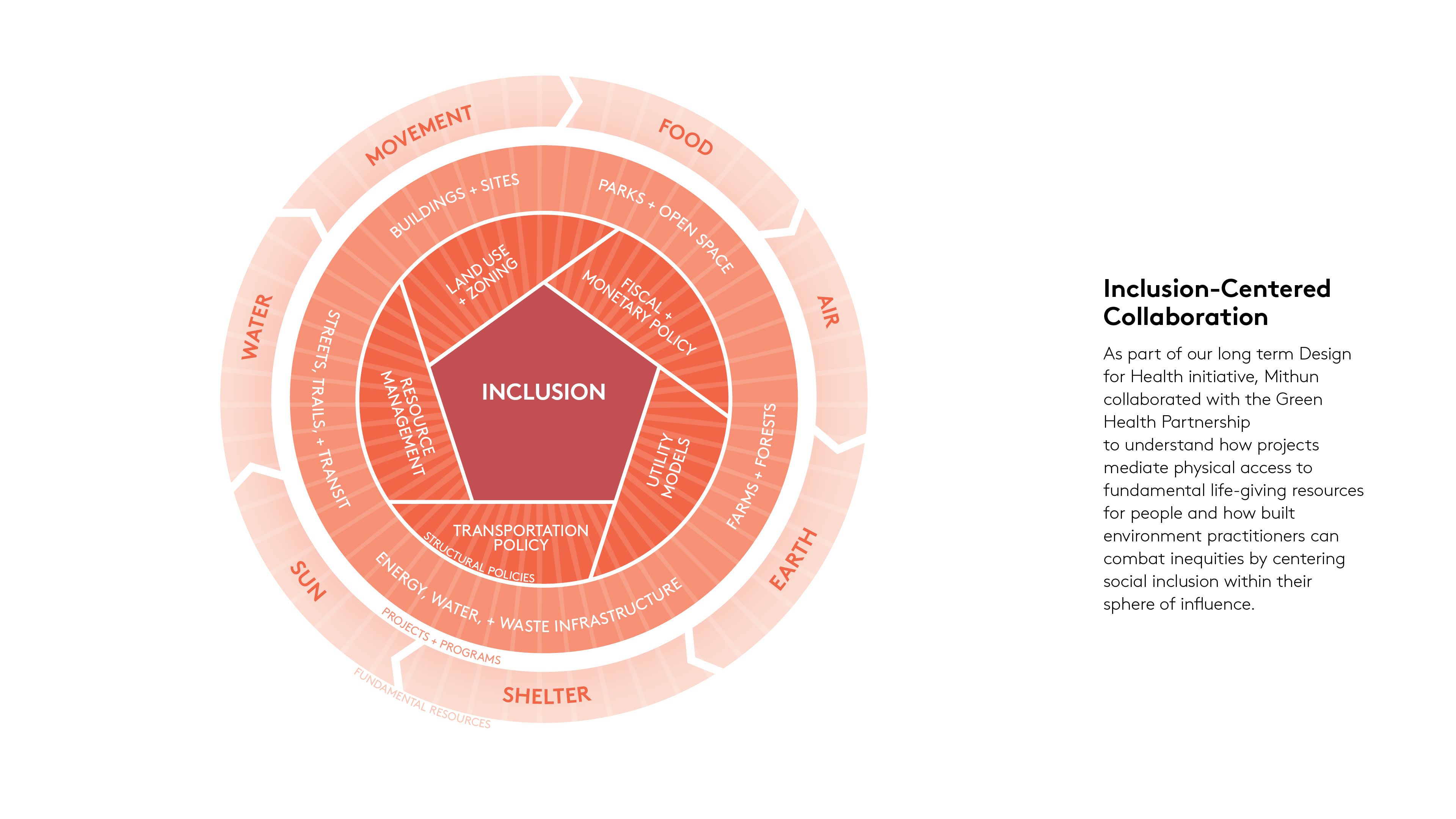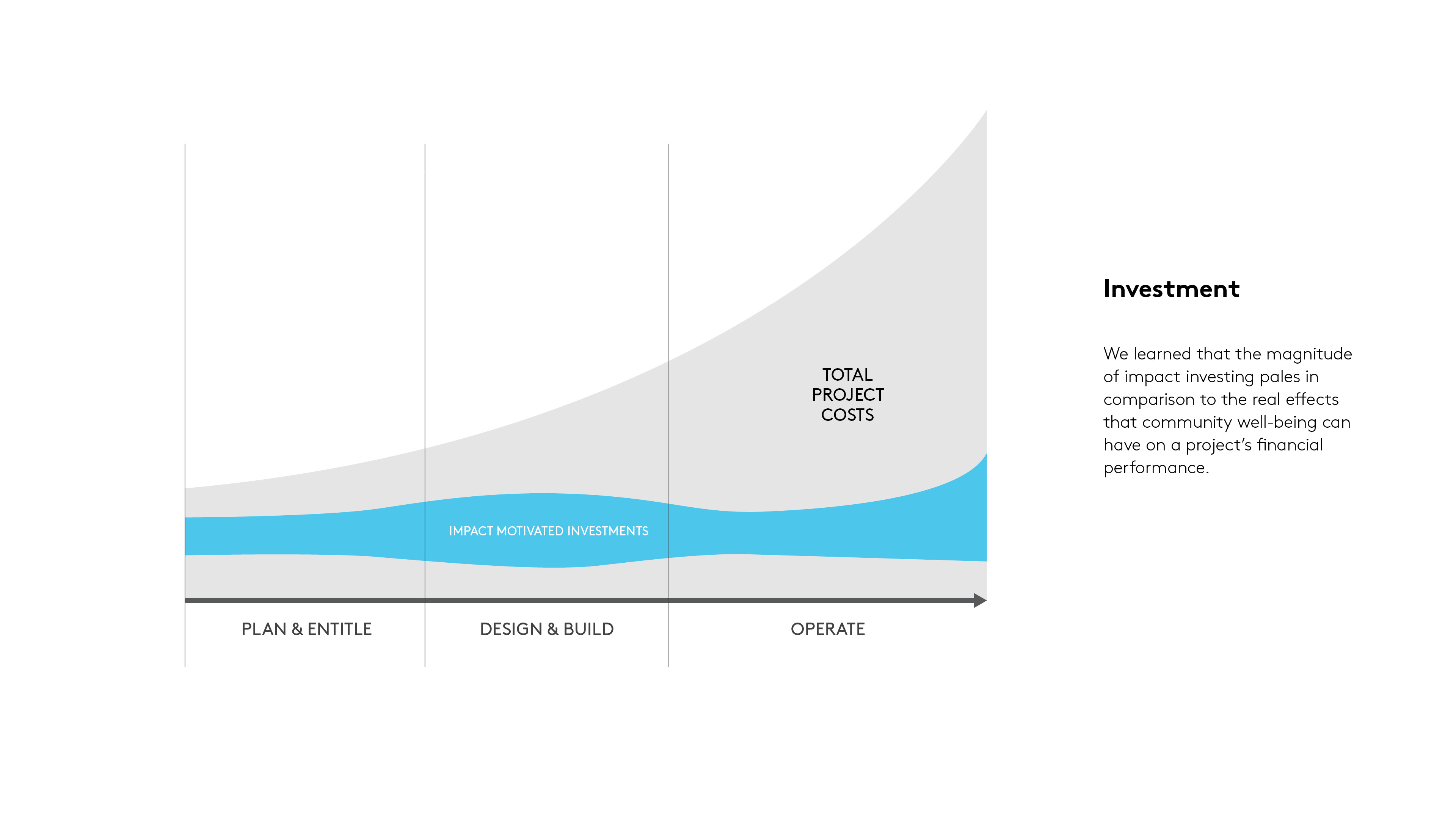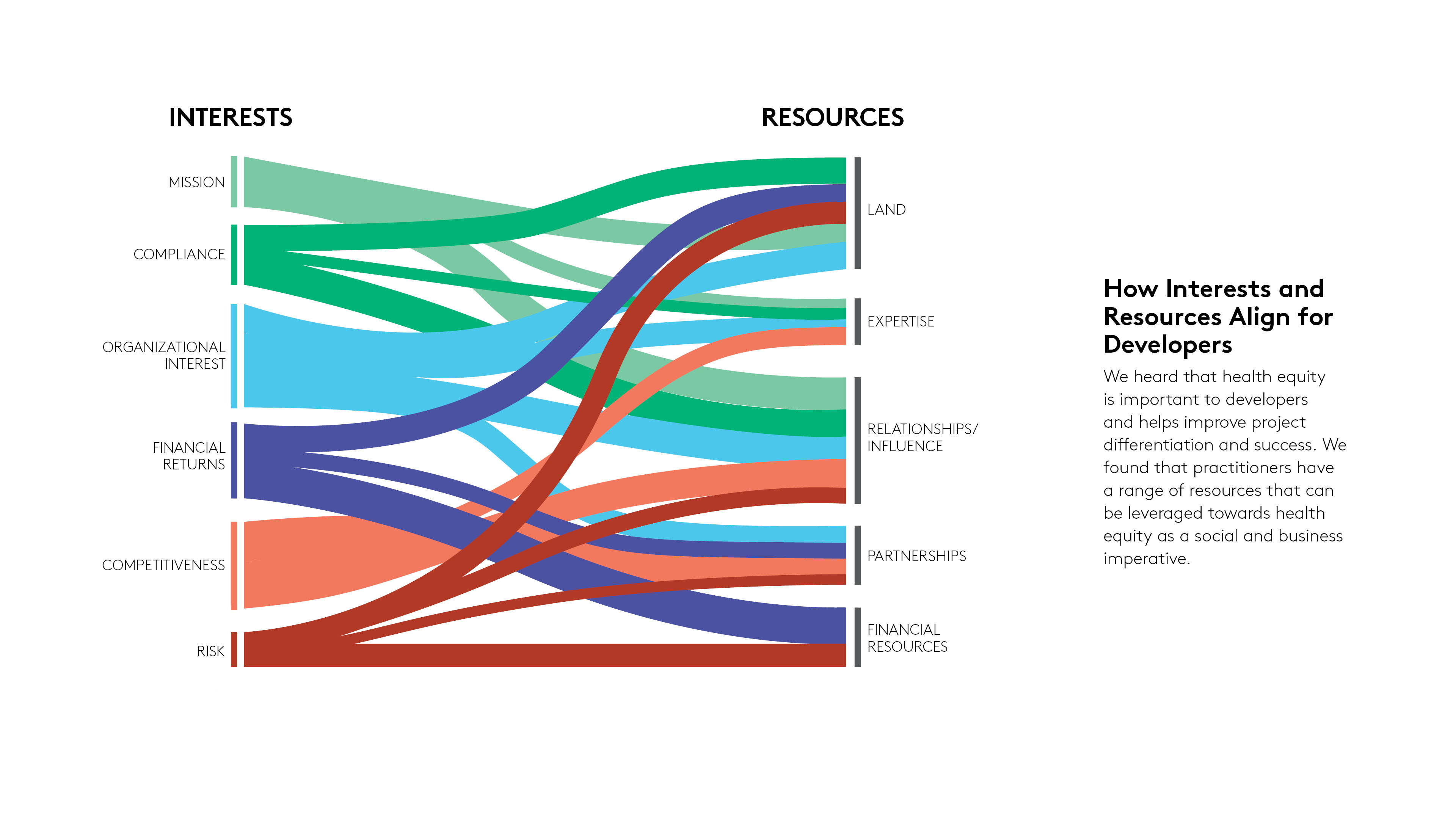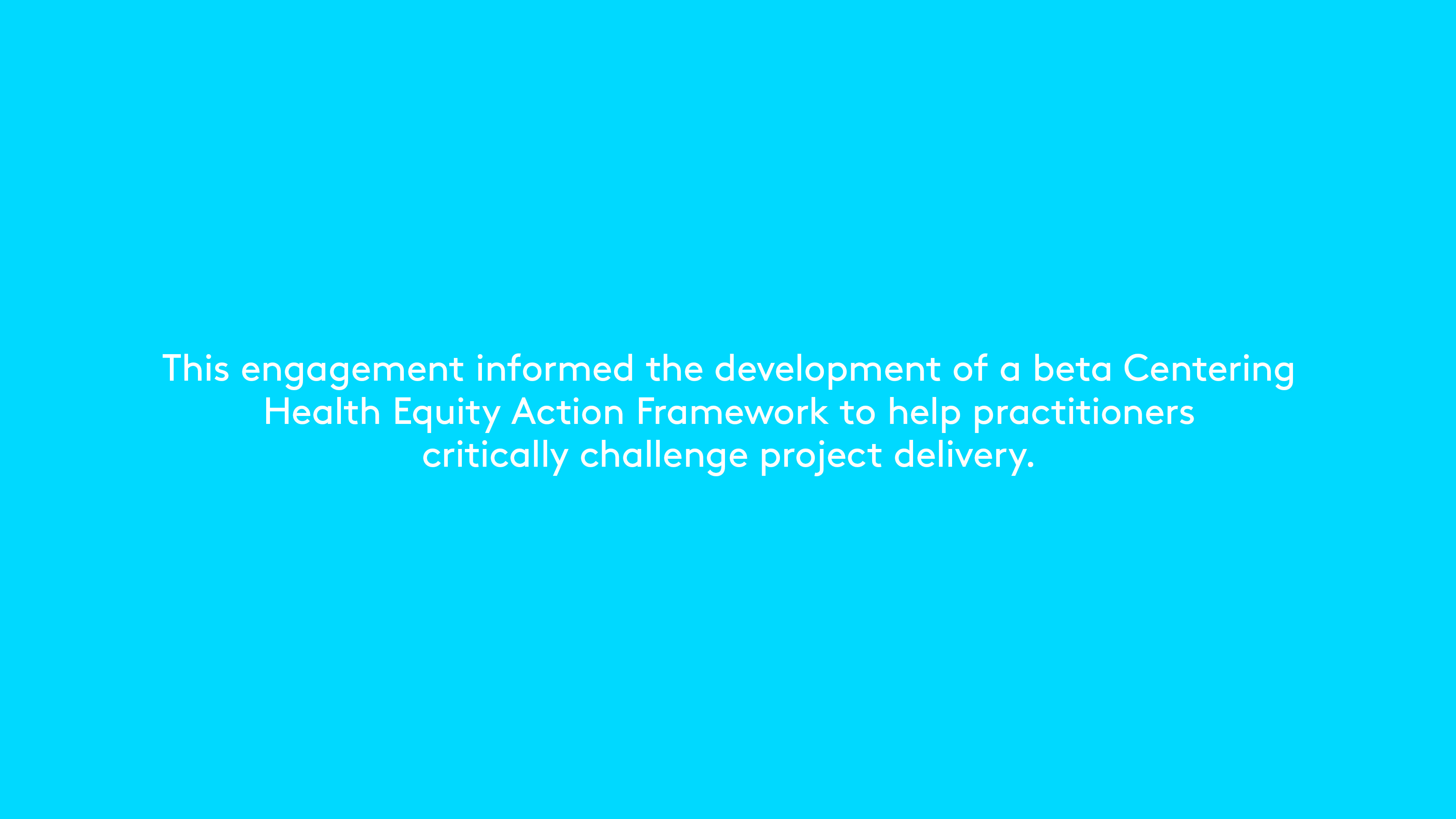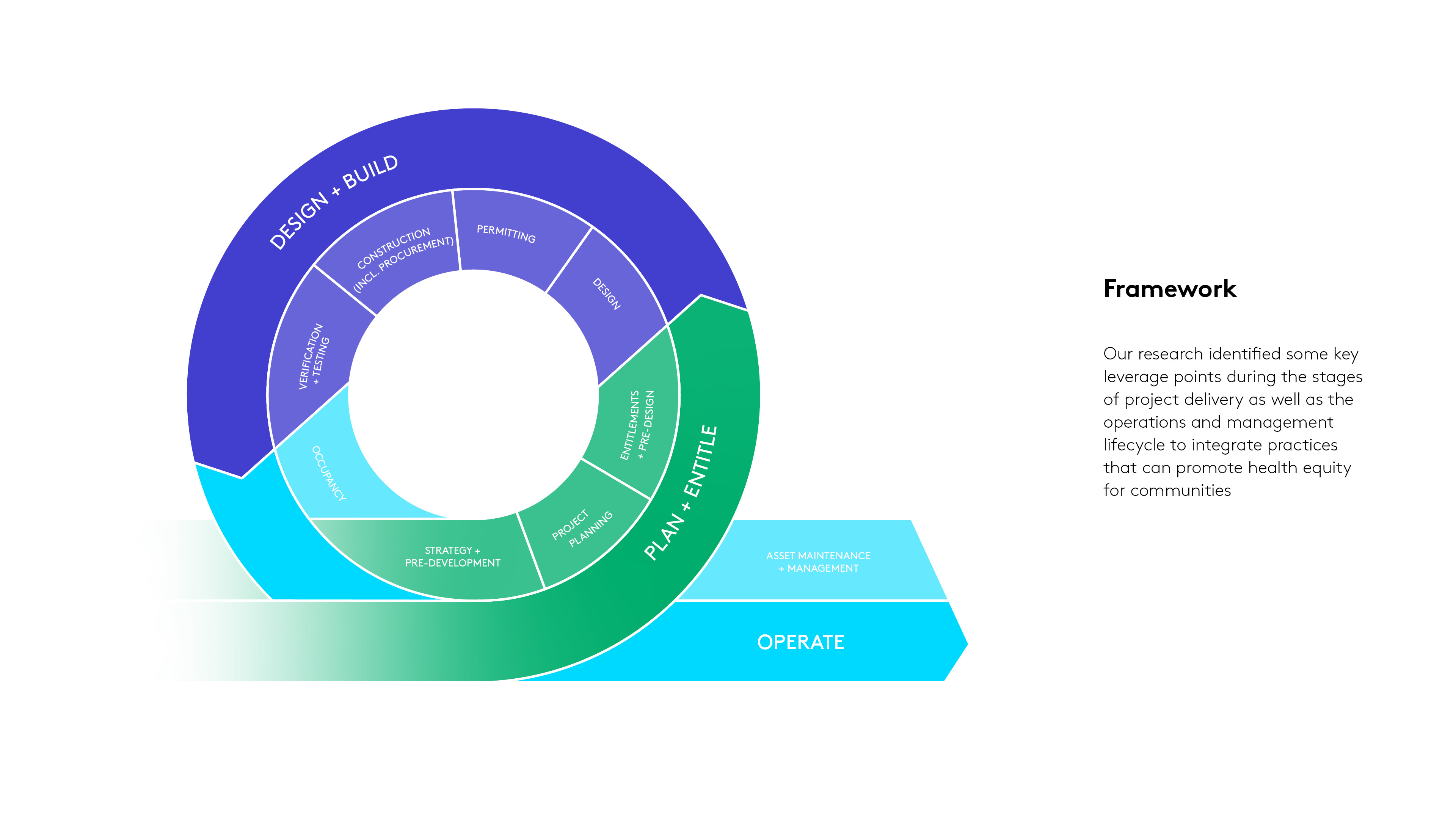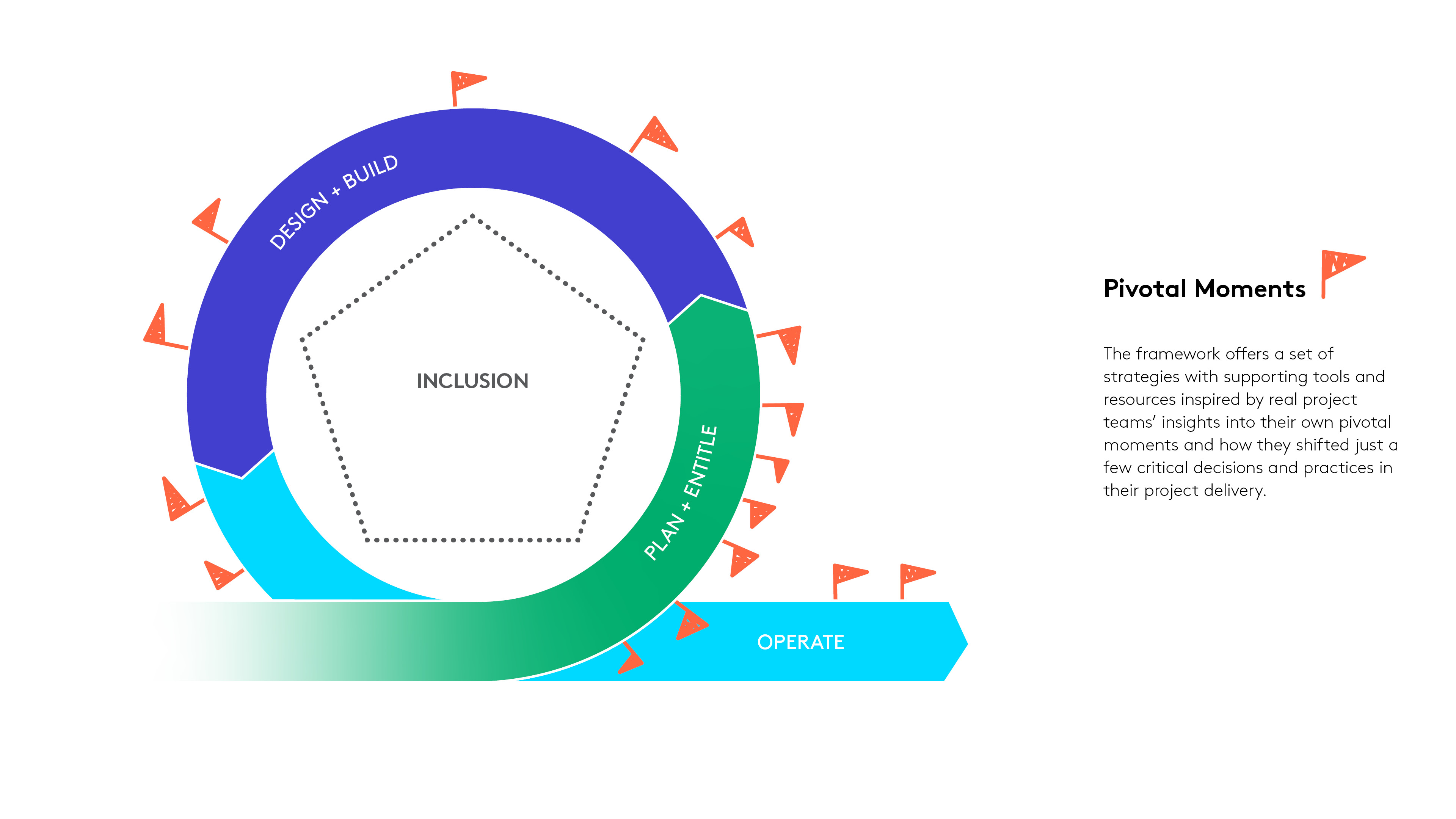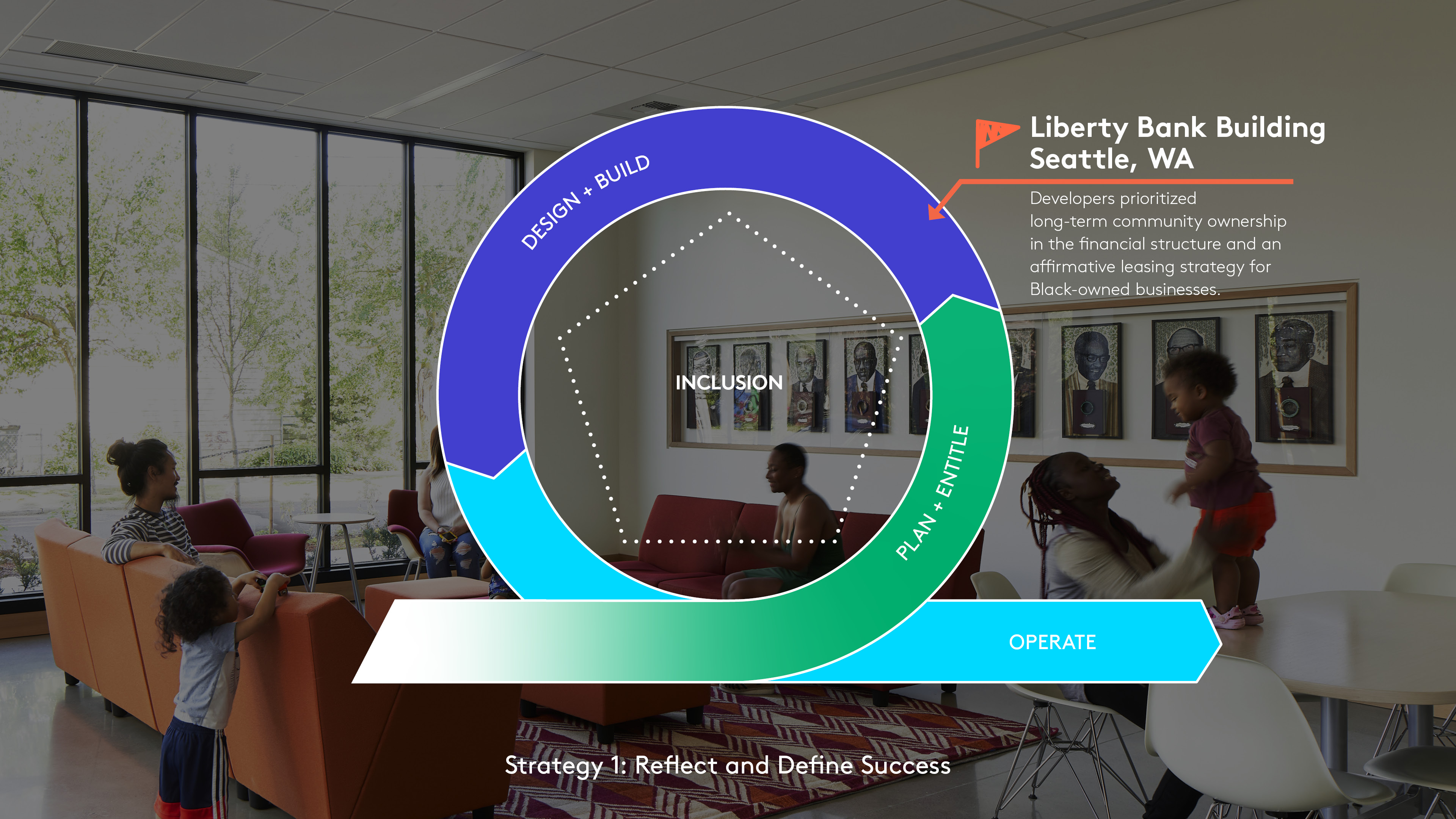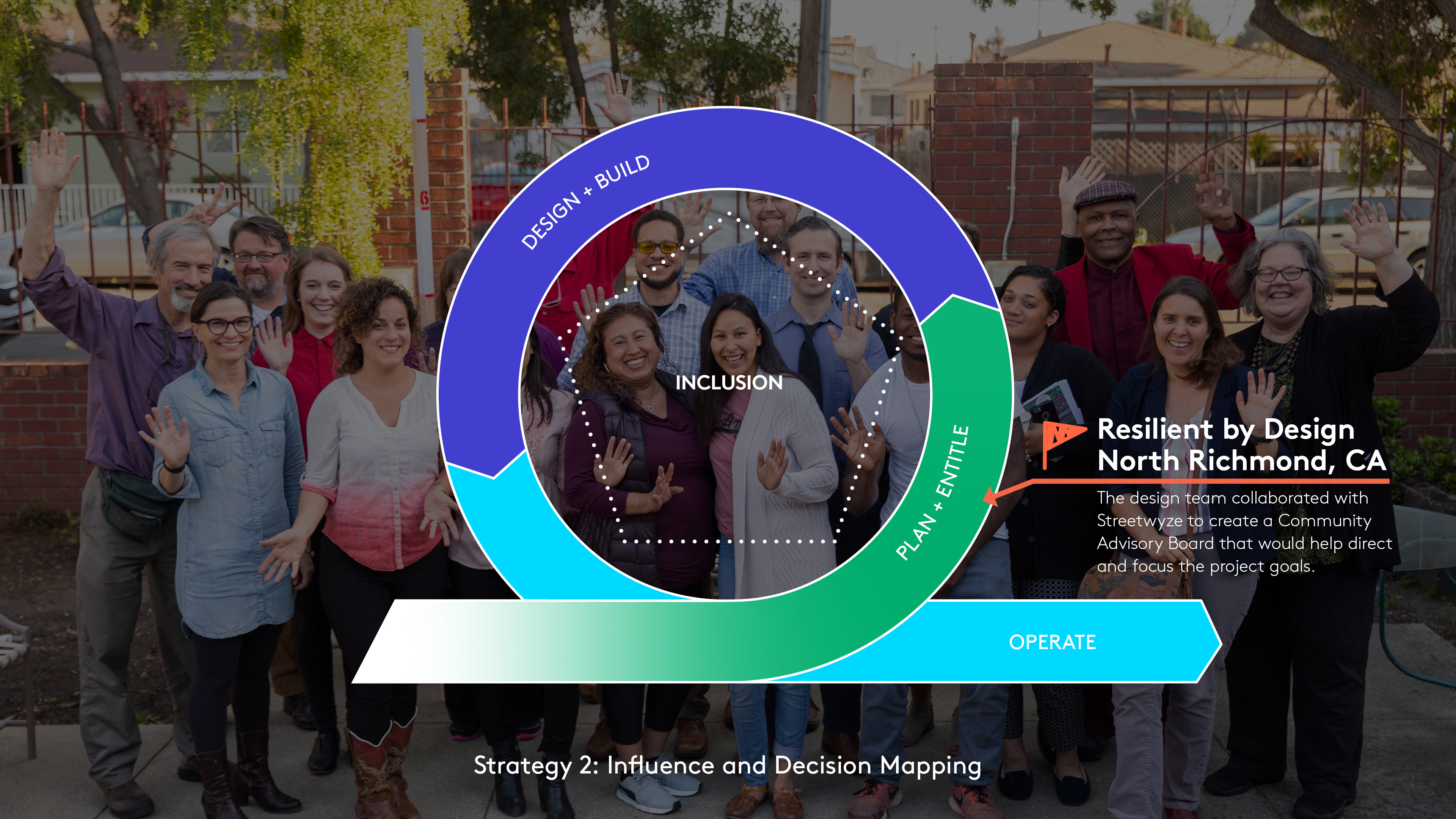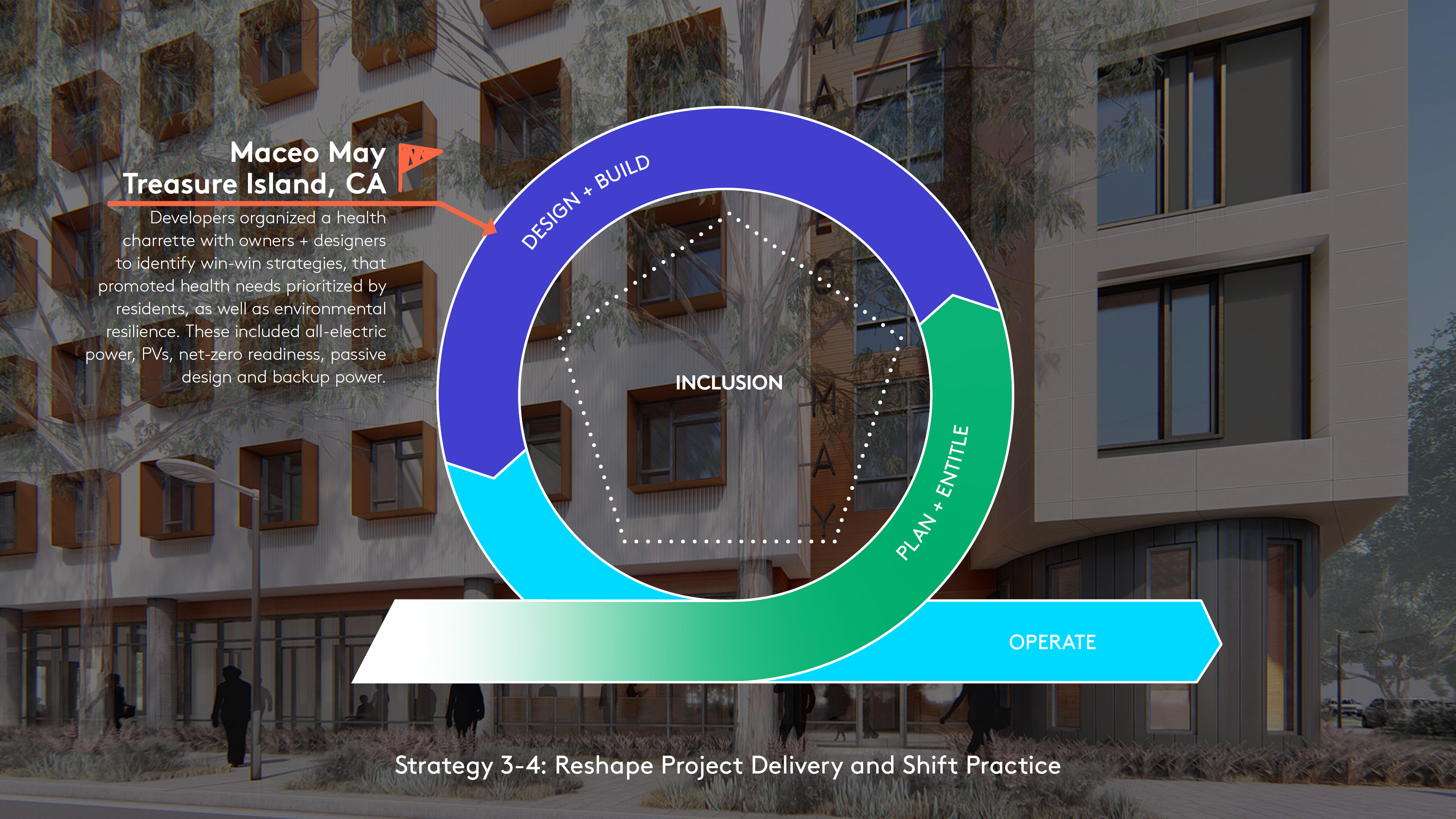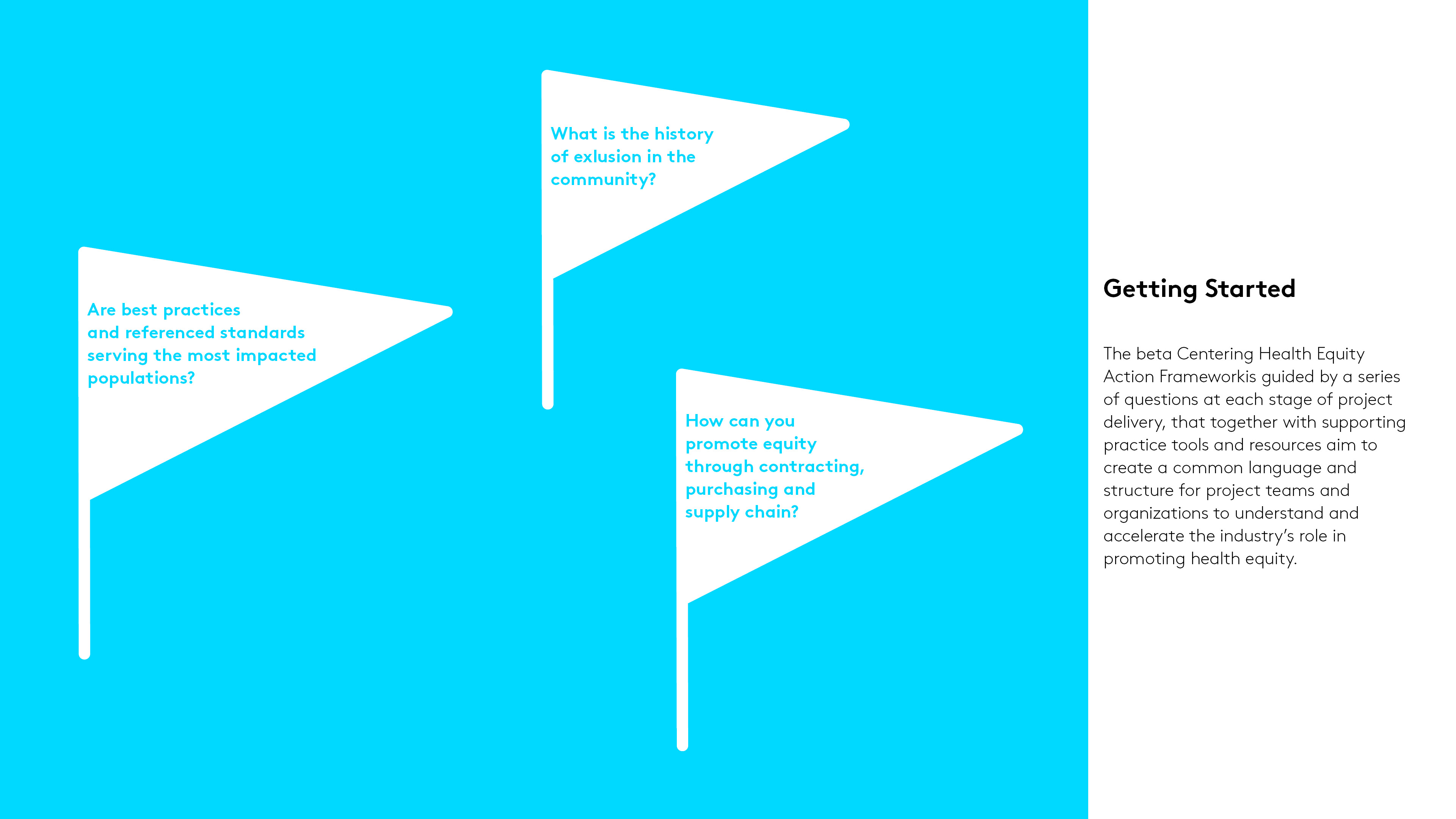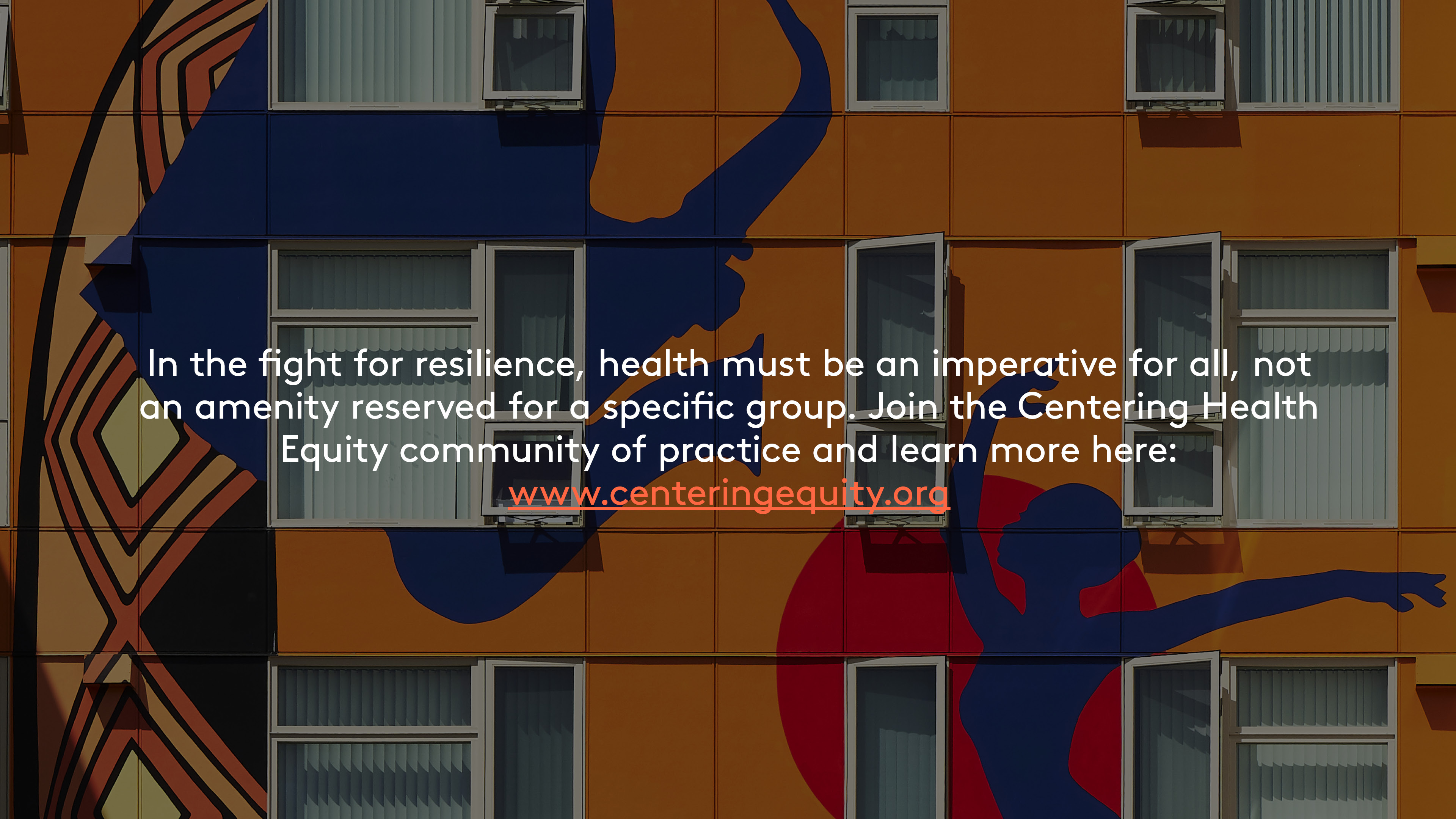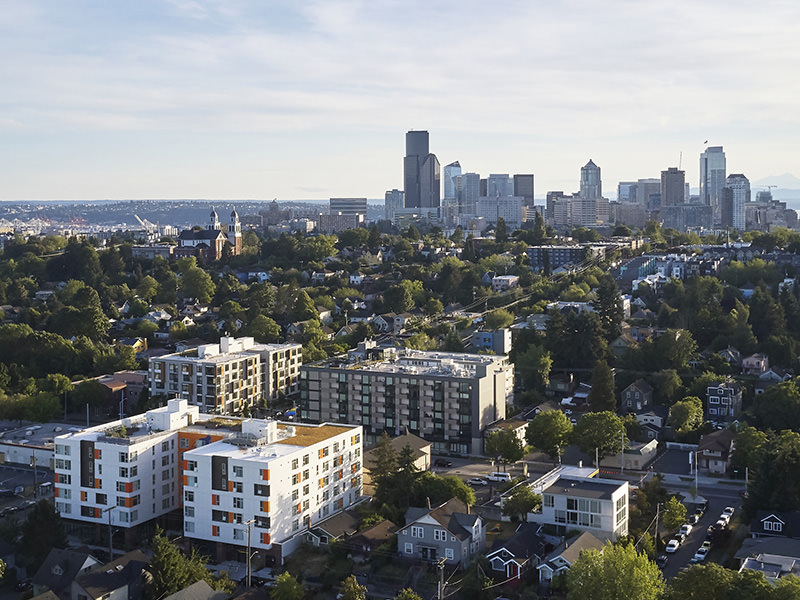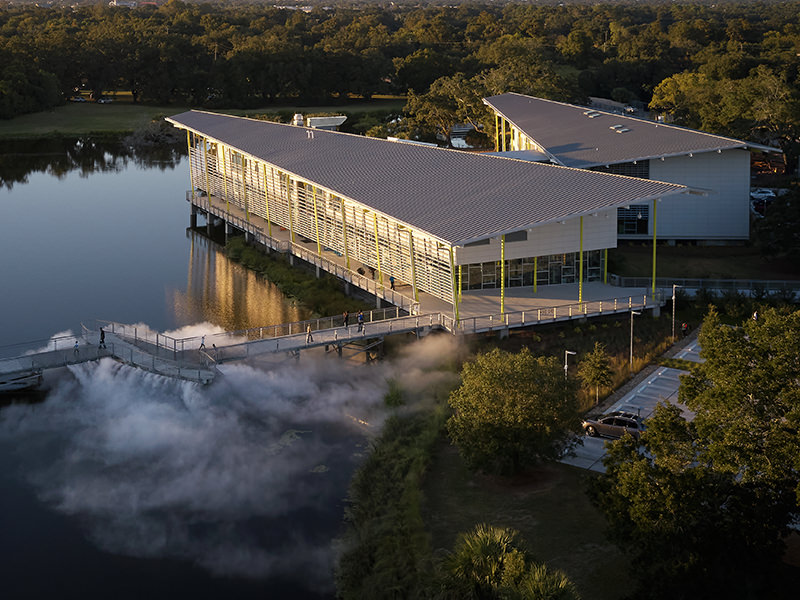“Health and Social Equity in Real Estate: State of the Market,” Urban Land Institute, 2020.
Tackling Health Equity
Vision
Mithun’s Design for Health research and practice initiative has tested design engagement, methods, and tools to address the social determinants of health, inclusion and resilience in communities across North America including Denver, Seattle and San Francisco. This work has helped shape neighborhoods and expand green building criteria and community-level protocols to include these topics.
Over more than a decade, our Design for Health team has heard a need to operationalize health equity. Public, institutional and community development sectors—as well as corporations and the private sector who are responding to Environmental, Social and Governance ESG) commitments—confirm the importance of charting a new course.
When COVID-19 first arrived in the U.S. via King County, Washington—also home to Mithun—it quickly became clear that the virus’s disparate impacts on Black, Indigenous and People of Color were shaped by underlying root causes in our socioeconomic institutions and the places we live. In April 2020, Mithun joined with research collaborator, the Green Health Partnership (GHP), to explore power and privilege within the real estate and infrastructure delivery cycle, asking why health equity isn’t a standard consideration within the industry, and generating hypotheses about how to build back better through recovery.
Research
The Centering Health Equity team engaged with developers, policy makers and planners, designers, contractors, property managers, sustainability and health consultants. The team collaborated with academic institutions to understand real estate economics, dynamics and institutional investing. Project implementation was broken down to understand decision making, blind spots and pervasive challenges in predominantly White-led design and development fields. Initial research identified key leverage points and challenges between the three major stages of project delivery: Strategy and Pre-Development, Design and Construction, and Operations. These ranged widely depending on varied motivations of decision-makers and the varied resources they had available.
Out of this work, Mithun and GHP created the beta Centering Health Equity Framework to help practitioners critically challenge conventional project delivery. This open-source action framework is guided by a collective impact theory of change and aims to inspire, mobilize and focus teams within their everyday roles. The initiative daylights the drivers of health equity and highlight decision-points in practitioners’ sphere of influence. It includes a conceptual framework for how design, real estate, and infrastructure influence health equity, paired with a beta action framework and question guide for practitioners. The Framework is packaged with a series of case studies describing pivot moments, key decisions and actors in projects that adopted practices to promote health and social equity. These real project stories from the field offer key insights and inspiration on where and when practitioners can plant “opportunity flags” and center health equity.
Looking Forward
The beta Centering Health Equity Framework creates a common language and structure to multiply health equity opportunities in real estate and infrastructure project delivery. No single practitioner or organization can do this on their own, but a better understanding of decision-making throughout the whole project lifecycle can multiply the opportunities to promote health equity. This R+D team’s theory of change is based on an open-source, collective impact model. All practitioners are invited to join this community of practice to critically challenge their work. Mithun also looks forward to working with leading organizations to pilot and further develop the framework through applied projects. Visit the Centering Health Equity website to get involved and learn more.


